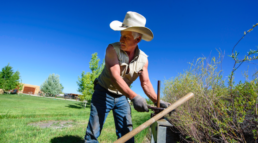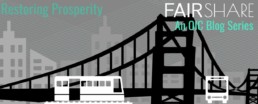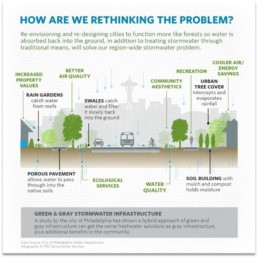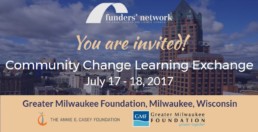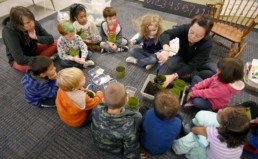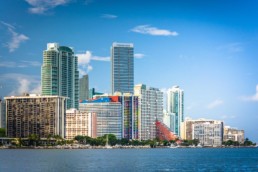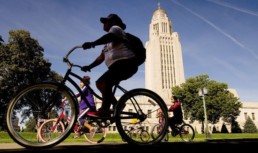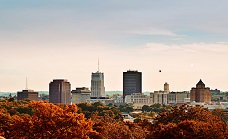Webinar: A Robust Local Media is Essential to Strong Communities. Learn What Funders Are Doing To Help.
Solutions Journalism: How Investing in Media Can Drive Positive Community Change
In a world where traditional journalism is finding it increasingly hard to compete with the fast-paced—and often “fake news”—blossoming across social media and digital platforms, local news outlets are faced with dwindling audiences and advertisers. Yet a robust media that can produce original, rigorous reporting, and help spur dialogue and debate on complex problems, are necessary to a healthy democracy in local communities.
How can funders support quality journalism, especially in smaller communities considered “media deserts”?
Join us for the webinar Solutions Journalism: How Investing in Media Can Drive Positive Community Change, Sept. 20, 2017, at 11 a.m. MT/ 1 p.m. ET.
This webinar, organized by TFN's Intermountain West Funders' Network and open to all funders, explores what is being done to support and preserve the type of journalism that illuminates complex issues and invigorates civic engagement. We'll learn about the Small Towns, Big Change project of the LOR Foundation and the Solutions Journalism Network, as well as hear from the Democracy Fund about ways foundations across the country can support essential journalism.
Photo: An image from the Taos News depicts a man opening the headgate on his acequia. The newspaper is part of the Small Towns, Big Change initiative.
Credit: Photo: Katherine Egli, The Taos News.
The Legacy Foundation: Leaning into Advocacy
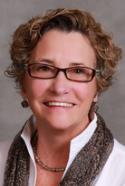 After participating in the very first Inside Policy call on Housing, Neighborhood Revitalization, and the HUD budget, Caroline Saxton, president of the Legacy Foundation in Lake County, Indiana, was moved to action. With cuts to public housing in the offing and the Community Development Block Grant, HOME, and Choice Neighborhoods programs under threat of wholesale elimination, Saxton wondered what these cuts would mean for the already struggling communities of Gary, Hammond, and East Chicago, which fall within the Legacy Foundation’s service area. Spurred to find answers, Saxton set in motion a process that would lead to the creation of a community impact statement, and the first steps in an advocacy campaign to raise awareness of vital community development programs. Here’s what she did:
After participating in the very first Inside Policy call on Housing, Neighborhood Revitalization, and the HUD budget, Caroline Saxton, president of the Legacy Foundation in Lake County, Indiana, was moved to action. With cuts to public housing in the offing and the Community Development Block Grant, HOME, and Choice Neighborhoods programs under threat of wholesale elimination, Saxton wondered what these cuts would mean for the already struggling communities of Gary, Hammond, and East Chicago, which fall within the Legacy Foundation’s service area. Spurred to find answers, Saxton set in motion a process that would lead to the creation of a community impact statement, and the first steps in an advocacy campaign to raise awareness of vital community development programs. Here’s what she did:
1.) Saxton’s first step was to convene the area’s major stakeholders, including fellow funders and representatives from all city and county departments that received formula funding from HUD. Because many of these departments worked closely on community revitalization with the Environmental Protection Agency, which was also facing steep cuts and the threat of closure of the Chicago EPA office, representatives from EPA as well as Save the Dunes, a local environmental group, were also invited.
2.) At the meeting, each representative discussed how proposed cuts would affect the organizations they supported and impact the daily lives of residents who benefited from HUD programs. Between the cities and county, Lake County stood to lose more than $10 million in HUD funding alone.
3.) To formalize their analyses, meeting participants agreed to document the effects of cuts and submit them in writing to the Legacy Foundation. The foundation received more than 30 individual statements.
4.) Saxton and the Legacy Foundation’s vice president, Kelly Anoe, compiled data from the documents into a comprehensive community impact statement detailing the organizational and human toll that proposed cuts would have on Lake County. The statement was formatted as a letter to Indiana’s U.S. senators and Lake County’s congressional representative, and packaged with individual statements as supporting documents. The letter and package will be delivered to the elected officials in person in a pre-arranged meeting.
5.) In addition, the Legacy Foundation is meeting with the publisher of the local newspaper to share the community impact statement and seek coverage of relevant policy issues on an ongoing basis.
6.) The Legacy Foundation will also share the community impact statement with the non-profit agencies that will be affected by the cuts, and will put together a list of representatives at non-profit agencies who can field press questions.
For more information on Legacy’s policy action process, contact Carolyn Saxton or Kelly Anoe at csaxton@legacyfoundation.org or kanoe@legacyfoundation.org.
Fair Share is an occasional column devoted to sharing innovative projects and promising practices from the OIC network. If you have ideas for a topic, or a story to share, contact Alicia at alicia@www.fundersnetwork.org.
Alicia Kitsuse
Program Director for Older Industrial Cities
alicia@www.fundersnetwork.org, (305) 667-6350
Embracing Green Infrastructure: Low Impact Designs Offer High Returns
"As a discipline, green infrastructure is still coming into its own as regional planning efforts shift from a traditional, project-centric practice to a holistic approach," writes Holly Powers of The Russell Family Foundation, a member of the Funders' Network.
"Necessity may be the mother of invention, but we need sustained, collaborative leadership to ensure that good ideas for infrastructure enhancements are widely shared and implemented."
Powers takes a look back at some of the leading events in the field, including The Green Infrastructure Leadership Exchange held this year in association with TFN's Smart Growth California.
Check out the full post on The Russell Family Foundation blog.
Request For Proposals Now Available for Partners for Places Round Eleven!
RFP Now Available for Partners for Places Round Eleven
Proposals Due July 31, 2017
In partnership with the Urban Sustainability Directors Network, the Funders' Network for Smart Growth and Livable Communities (TFN) is pleased to announce the opening of Round Eleven of the Partners for Places grant program.
Partners for Places is a successful matching grant program that creates opportunities for cities and counties in the United States and Canada to improve communities by building partnerships between local government sustainability offices and place-based foundations. National funders invest in local projects to promote a healthy environment, a strong economy, and well-being of all residents. Through these projects, Partners for Places fosters long-term relationships that make our urban areas more prosperous, livable, and vibrant. The grant program provides partnership investments between $25,000 and $75,000 for one year projects, or $50,000 and $150,000 for two year projects, with a 1:1 match required by one or more local foundations.
Creating a Successful Proposal - Be Sure to Review Guidance Documents
As of Round Nine, Partners for Places accepts proposals for the creation of a Sustainability or Climate Action Plan, as long as the plan meets our minimum requirements or addresses an area identified for performance improvement or implementation for Certified STAR Communities. If your proposal requests funding for the creation of one of these plans, please closely review our minimum requirements document linked here before preparing your proposal.
In addition, all proposals are scored on the extent to which projects include meaningful involvement of priority audiences/stakeholders in program development and implementation. To review our guidance document on meaningful engagement, click here.
Green Stormwater Infrastructure Projects
In addition to the existing sustainability priority areas, there is dedicated funding in Round Eleven to support green stormwater infrastructure projects that advance water-related sustainability goals. The Green Infrastructure Leadership Exchange, a new practitioner network supporting green infrastructure communities, is a new partner to USDN and TFN for the green stormwater infrastructure projects.
Proposals Due July 31, 2017
The application deadline for Round Eleven is July 31, 2017 (by 11:59 p.m., any time zone). Please visit the Partners for Places webpage for more information. Here you can view our promotional video download the Request for Proposals (RFP), access our Proposal Form and consult our Frequently Asked Questions (FAQ) document. You may also want to visit our Idea Bank which has summaries of all the proposals submitted in prior rounds. TFN will host a webinar to answer any questions about the grant program on June 15, at 1:00 p.m., Eastern Time. Please register for the webinar here. A recording of the webinar will be made available through our website for those of you unable to participate.
Investors in Partners for Places
Partners for Places general grant program is supported by Bloomberg Philanthropies, The JPB Foundation, Kendeda Fund, New York Community Trust, The Summit Foundation, and Surdna Foundation, with support for green infrastructure projects provided by the Fred A. and Barbara M. Erb Family Foundation and the Pisces Foundation . A selection committee comprised of foundation representatives and urban sustainability directors will make grant selection decisions on behalf of Partners for Places, and awards will be announced on November 2, 2017. If the RFP and FAQ documents don’t answer all your questions, please contact Ashley Quintana at ashley@www.fundersnetwork.org or Ann Wallace at ann@www.fundersnetwork.org for more information.
We look forward to hearing from you!
Best,
The Partners for Places Team
Join us for the 2017 Community Change Learning Exchange!
What is the Community Change Learning Exchange?
The Community Change Learning Exchange (CCLE) aims to provide a means to unlock and share lessons learned, what works, what doesn’t and what still remains to be learned, as well as to create a safe space for funders to discuss not only past, but current challenges they are experiencing in community change work. Check out our agenda!
Our CCLE includes:
• 1.5 day peer learning exchange, including: performance by MPower Theater Group and FrameWorks Institute, learning from the local Healthy Neighborhood Initiative, tours of Silver City, Burnham Park, Layton Park, and more!
• Shared learning in a safe space
• Learning from people and place in the Greater Milwaukee area including the Dominican Center for Women, Layton Boulevard West Neighbors, and Amani
• Facilitated group discussions on funder challenges & opportunities
• Exploring how issues of equity impact our community change efforts
• Exploring the importance of self-care
What are the desired outcomes?
We hope that the occasional learning, sharing and challenging of one another through authentic “safe space” conversations on our respective work in place-based community change will enable us to:
• Capture, cull and disseminate the best practice lessons to the field of place-based community change
• Glean learning opportunities from others in the field for the purpose of informing one’s own place-based community change work
• Advance funder thinking and action to the importance and value of community change work in your own places.
How does the CCLE operate?
The CCLE is intended to serve as a safe space for dialogue among funders that will allow them to discuss – openly – opportunities, challenges and perspectives in community change work.
For more information, email Dion Cartwright at dion@www.fundersnetwork.org.
Recommended Accommodations:
Aloft Milwaukee Downtown
1230 N Old World 3rd St, Milwaukee, WI 53212
The Brewhouse Inn & Suites
1215 N 10th St, Milwaukee, WI 53205
The Astor Hotel
924 E Juneau Ave, Milwaukee, WI 53202
Days Inn & Suites Milwaukee
1840 N 6th Street, Milwaukee, WI 53212
ABOUT COMMUNITY CHANGE LEARNING EXCHANGE
The Community Change Learning Exchange (CCLE) is a forum for foundation leaders and staff to engage in frank discussions about the opportunities and challenges associated with place-based community change. CCLE's aim is to promote honest dialogue about the realities of undertaking place-based work and what funders might do differently to insure the equitable, long-term viability of community change work. A central assumption of CCLE is that the purpose of community change is to dismantle the underlying systemic and structural conditions that perpetuate disparity and disinvestment in low-income neighborhoods and communities of color.
The Annie E. Casey Foundation convened the first CCLE meeting in Baltimore in 2014 and has served as the CCLE convener and executive secretariat, but CCLE is not a Casey initiative. Subsequent meetings were held in Cincinnati, Detroit and San Diego between 2014 and 2016. The foundations that hosted the CCLE meetings have been involved in place-based work, including implementing long-term community change initiatives (CCIs). The meeting explored lessons related to community engagement, race equity and inclusion, transparency, mitigating the effects of gentrification and displacement and other essential elements of effective place-based work. Community representatives also participated in CCLE site visits and discussions, allowing foundation representatives to engage with them at a depth that is unusual in many funder-grantee relationships.
CCLE is a vital forum for capturing and sharing knowledge, as well as a community of support for representatives of foundations engaged in placed-based community change. It offers a safe space for discussion and reflection that is hard to achieve when one is immersed in actually doing the work. CCLE augments the work of philanthropic affinity groups concerned with place-based work (all of which participated in CCLE) and provides a platform to inform the field about how to do this important work better. To date, approximately 100 foundation staff and other stakeholders participated in the four CCLE sessions.
Looking for Progress: Connecting Opportunity to Economic Development in Lake County
As part of our ongoing work exploring the lessons and recommendations offered in Looking for Progress in America's Smaller Legacy Cities: A Report for Place-based Funders, we asked some of the participants in the study: How has revitalization proceeded in your community, and how might your foundation and local partners ensure that economic growth and economic opportunity develop in a coordinated fashion? Carolyn Saxton, president & CEO of the Legacy Foundation, shares her thoughts: During the past year the Funders’ Network’s Federal Reserve-Philanthropy Initiative conducted site visits to several industrial cities: Rochester, New York; Grand Rapids, Mich.; Cedar Rapids, Iowa; and Chattanooga, Tenn. The purpose of these visits was to explore four small cities that appeared to have experienced some measure of revitalization in the post Great Recession environment. I was one of several community foundation leaders invited to participate in these exploratory journeys and I went to each (with the exception of Chattanooga). These trips were particularly important given Legacy Foundation’s work in four communities in Lake County, Indiana: Gary, East Chicago, Hammond and Whiting. Once a thriving center of steel production and other forms of manufacturing, Lake County has seen a loss of manufacturing beginning in the 1960s. This has contributed to the related problems of economic distress, population loss, property abandonment, and loss of municipal tax base. The effects of this decline persist into the present, manifesting in high levels of joblessness, low-performing schools, and neighborhood deterioration. Our discussions following the four site visits evolved into debating the question of where these cities were on the arc of economic growth and economic opportunity. We generally agreed that place-based funders are central not only to advancing economic opportunity among disenfranchised populations, but to connecting opportunity-oriented programs to economic development efforts. Two current programs in Lake County reflect the Legacy Foundation’s commitment to shaping the arc of economic opportunity over the long term. Three years ago Lake County was one of six Indiana counties selected by the state for a multi-year pilot “On My Way Pre-K”, an initiative for economically vulnerable 4-year-olds to have an early childhood pre-kindergarten educational experience. Studies show: • 90% of a child’s brain development occurs before the age of 5. • Children in poverty face academic and social opportunity gaps including a lack of early exposure to language, reading and math. • Children from low income families typically start school a year to a year and a half behind their peers. The average fourth-grader growing up in poverty is already three grade levels behind — and only half of every fourth-grade class will graduate from high school. • This achievement gap negatively impacts the local workforce and economic development. • Numerous research studies have demonstrated that that this gap is lessened by providing high-quality early learning environments for children who live in disadvantaged environments. Parents from Gary, East Chicago, Whiting, Hammond and other Lake County communities select the pre-school where their child will attend from a list of qualified providers. Supplemental programs are designed to involve them in their child’s learning from kindergarten through third grade. Legacy Foundation and other funders raised the necessary funds to qualify for a state match which together totaled $3.6 million for hundreds of Lake County children and their families. This project has a long-term waiting period to determine if the children will succeed academically, but it provides the equitable opportunity that these children would not have had otherwise. For sustainable change to take root it is important to have those most affected to be included as partners in order to work on a resolution and address inequitable opportunities. As place-based funders, our role is to ensure that those who are experiencing the oppression are involved in developing solutions. This thought is the lens for Legacy Foundation’s Neighborhood Spotlight initiative. Neighborhood Spotlight engages community residents through a collective impact process to develop and act on plans for transforming their own neighborhoods. What is collective impact? It is people sharing ideas to make their neighborhood a better place to live and work. Selected neighborhoods receive customized year-long mentoring to engage residents, business owners, and school and government personnel to gather opinions on neighborhood concerns which need improvement, such as jobs, education, and transportation. Work groups around each identified area are then convened to develop improvement goals. Ultimately the goals from each work group are brought to the larger group and an overall plan for the neighborhood is developed. Gary-Emerson neighborhood was chosen last year to take part in Neighborhood Spotlight, while the Gary-Miller neighborhood — selected three years ago — has already been executing projects. One of their action steps was to create an environment to promote and encourage entrepreneurial growth. With Legacy’s support, residents can now take advantage of financial literacy programs and small business development workshops. They have also established a small business incubator in their neighborhood. We have recently received a grant from the Regional Development Authority to support projects from their transportation plan. So what did I take away from our visits to the smaller legacy cities we studied as part of the Federal Reserve-Philanthropy Initiative? Thinking retrospectively, I would argue that it is more than just economic opportunity that we as funders need to provide. Our role is to create a level playing field for those who are disenfranchised. Our role is to ensure that we are providing equitable opportunity, which takes the discussion much deeper. How do we define equitable opportunity? Here’s an illustration you’re probably already familiar with: 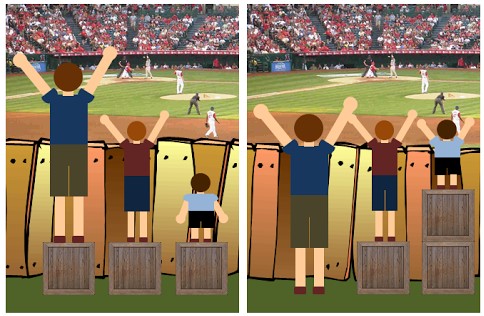 Three children of different heights go to a ball game. They only have standing room which is at an ivy-covered fence and none can see over the top. Each child is given a box to stand on to help with their viewing. The tallest child is in fine shape and is able to see every play. The second child can see over the fence if he stands on his toes. The third child is still about a foot shorter than the top of the fence. He only gets a view of the ivy he faces. Equal opportunity? Yes. Each child was at the game, had a place at the fence and was given a box to stand on. Equitable? No. Each child needed a different number of boxes to see over the fence and watch the game. If we only look at economic growth and economic opportunity, we are missing that key factor of equity. Jobs might be available which in turn will build economic growth. But if we don’t make it possible for everyone to be prepared equitably to compete for those jobs, we will always have those left out of the recovery continuum. And we’ll always have children unable to see over that fence. Neighborhood Spotlight and On My Way Pre-K are steps forward in providing equitable opportunity. Neither can be easily evaluated in one, three, or even five years. But as we place-based funders make decisions, we must ensure that our lens is focused on creating an equitable environment for all.
Three children of different heights go to a ball game. They only have standing room which is at an ivy-covered fence and none can see over the top. Each child is given a box to stand on to help with their viewing. The tallest child is in fine shape and is able to see every play. The second child can see over the fence if he stands on his toes. The third child is still about a foot shorter than the top of the fence. He only gets a view of the ivy he faces. Equal opportunity? Yes. Each child was at the game, had a place at the fence and was given a box to stand on. Equitable? No. Each child needed a different number of boxes to see over the fence and watch the game. If we only look at economic growth and economic opportunity, we are missing that key factor of equity. Jobs might be available which in turn will build economic growth. But if we don’t make it possible for everyone to be prepared equitably to compete for those jobs, we will always have those left out of the recovery continuum. And we’ll always have children unable to see over that fence. Neighborhood Spotlight and On My Way Pre-K are steps forward in providing equitable opportunity. Neither can be easily evaluated in one, three, or even five years. But as we place-based funders make decisions, we must ensure that our lens is focused on creating an equitable environment for all. 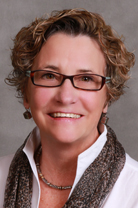 About the author: Carolyn Saxton is president & CEO of the Legacy Foundation
About the author: Carolyn Saxton is president & CEO of the Legacy Foundation
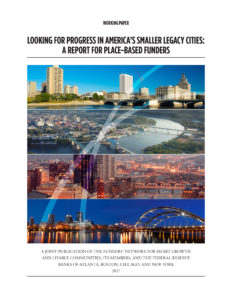
Looking for Progress in America's Smaller Legacy Cities: A Report for Place-based Funders As part of The Funders’ Network-Federal Reserve Philanthropy Initiative, the Federal Reserve Banks of Atlanta, Boston, Chicago, and New York recently released, in partnership with The Funders’ Network, a whitepaper presenting findings from a four-city study tour of older, legacy cities. This blog is the second in an occasional series stemming from that report. The full report can be downloaded here.
Going PLACES: #StayWoke Philanthropy: Owning our role as the system
For years, I have escaped to the beaches of Miami, Florida as an outsider looking to steal some fun in the sun. But thanks to an immersive site visit with the 2017 cohort of PLACES fellows, I possess a greater appreciation and understanding of Miami as a place filled with a rich mix of history and culture unparalleled by any other city in the country. Our time in Miami made the most of my senses, whether it was during our emotional grounding exercise on the sunny shore of Historic Virginia Key where we got to know one another personally, or during our savory Caribbean lunch at Clive’s Cafe in Little Haiti.
Yet, despite the exposure to all things that make cities like Miami beautiful, it is difficult to gaze past the savage inequities that are still fracturing the city’s communities of color. All the things that make Miami a beautiful place could not mask the trend that we are all familiar with in our own cities, and it hit me like a sack of bricks as we passed through Miami’s Overtown neighborhood.
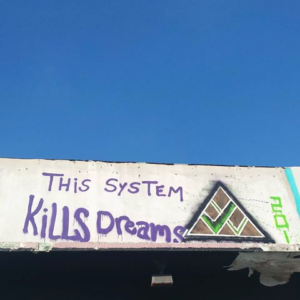 Historic Overtown, a once bustling center for black life and culture regarded as the “Harlem of the South”, sits just northwest of downtown Miami in the shadow of failed urban renewal policies. The construction of Interstate 95 during the 1960s, which runs directly through Overtown, ripped through the neighborhood and displaced thousands of residents. The project set off a trend of population decline that has spanned decades. As we passed through the community on a packed van on our commute to Little Haiti, tears fueled by anger and hurt began to fall as I realized that this neighborhood’s story is far too common: a historically black place crippled by policies that are designed to wipe away its entire existence. This has been the story in other major cities—Nashville, New Orleans and my home of Atlanta, just to name a few.
Historic Overtown, a once bustling center for black life and culture regarded as the “Harlem of the South”, sits just northwest of downtown Miami in the shadow of failed urban renewal policies. The construction of Interstate 95 during the 1960s, which runs directly through Overtown, ripped through the neighborhood and displaced thousands of residents. The project set off a trend of population decline that has spanned decades. As we passed through the community on a packed van on our commute to Little Haiti, tears fueled by anger and hurt began to fall as I realized that this neighborhood’s story is far too common: a historically black place crippled by policies that are designed to wipe away its entire existence. This has been the story in other major cities—Nashville, New Orleans and my home of Atlanta, just to name a few.
The anger grew as I realized that these development projects, reflecting billions of public and private investment, stand as monuments to structural racism and are painful reminders that people of color are repeatedly treated as disposable. This is still the case in 2017 as market pressures are encouraging developers and policymakers to rapidly gentrify cities while simultaneously displacing low-income residents and entire neighborhood-based institutions.
Later in the afternoon, we had a very timely discussion on strategies to disrupt the systems that act together to oppress communities like Overtown. And although philanthropy is actively addressing troubling patterns in the social sector, our call to action as fellows was to look for ways to dig deeper to address the root causes. Our facilitator, Bina M. Patel emphasized that the “problem with focusing on patterns is that you only change the scale or frequency of the pattern, rather than eliminating the pipeline - and this is not systems change”.
I had to take a moment here and ask: How seriously committed are we as funders in taking ownership of philanthropy’s role as a system that has historically perpetuated the very inequities it seeks to eliminate? In the case of development in places like Overtown, how long has philanthropy slept on the root causes that fuel displacement in communities of color, and what will it take for us to WAKE UP? We frequently heard that the “train has left the station” from some of the residents in Miami, suggesting that the development is happening too rapidly in the area and the system is too complex to disrupt. I may be oversimplifying the problem, but I don’t believe the rapid pace of gentrification is a cause for surrender. I believe philanthropy can play a significant role in the shifting power (dollars) that residents need to reclaim, protect, and determine the future of their neighborhoods.
I am now looking across the field to get a better picture of what share of philanthropic giving goes to supporting resident voices when compared to the amount of investment for physical development projects that fracture communities of color. These are the type of complex issues I look forward to untangling with other members of the ‘17 PLACES class. With equity as the priority for all of us, we recognize that philanthropy can’t really do systems change work if we don’t put people, especially people impacted by the broken systems we helped to create, at the center of all of our funding decisions.
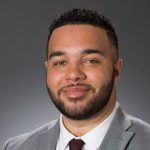 Alex Camardelle
Alex Camardelle
Program Assistant
Annie E. Casey Foundation
Alex is program assistant for the Annie E. Casey Foundation’s Atlanta Civic Site, where he supports a place-based effort to strengthen economic security for children and families. Specifically, he works with senior staff and grantees to promote policy and practice improvements that aim to achieve equity for low-income communities of color in Southside Atlanta. Alex also leads the design of a strategy for stronger place-based investments in youth and young adult engagement and grassroots organizing. Before joining Casey, he provided legislative research support for various government and nonprofit organizations including Atlanta Public Schools, the Southern Regional Educational Board, and Louisiana State University. Through research advocacy, grantmaking, and thought leadership, Alex has helped community-based organizations and public systems develop new ways for activating and advancing a social justice agenda for the populations they serve.
Alex is currently working on a Ph.D. in Policy Studies at Georgia State University where he studies the social, political, and economic dimensions of policies that impact neighborhoods of color in the South. He holds a Master of Public Administration degree from Georgia State University and a Bachelor of Arts degree from The University of Alabama.
New Partners for Places Grantees Announced!
Sustainability Efforts in 15 Cities Get $1.7 Million in New Funding
We are proud to announce that 15 cities across the United States will receive more than $1.7 million for sustainability efforts through the Partners for Places matching grants program — projects as diverse as supporting urban agriculture and reforestation, providing green jobs for low-income workers, and ensuring all residents benefit from their community’s environmental progress.
“Climate issues are people issues,” said Darryl Young, director of Sustainable Cities at The Summit Foundation and a TFN board member. “At the city scale, there’s meaningful work to be done jointly in the public and private sectors. These Partners for Places proposals are where people are rolling up their sleeves and building strong, sustainable towns that strengthen communities and improve lives.”
These sustainability efforts will take place in cities large and small, from South Florida to the Pacific Northwest Florida, focusing mostly on low-income areas. They include: Columbia, Mo., where an under-used 10-acre site in a low-income neighborhood will be turned into an urban farm and agriculture park; Newark, N.J., where efforts to promote healthier, more energy-efficient homes includes a pilot program targeting 6-year-olds exposed to lead; and Boulder, Colo., which will work with Latino-owned landscaping businesses to convert to eco-friendly equipment and develop workforce training programs in renewable energy and efficiency careers.
Partners for Places, led by TFN and our partners at the Urban Sustainability Directors Network, is a collaborative matching grant program that connects local government and philanthropy to invest in sustainability projects that promote a healthy environment, a strong economy and well-being for all residents.
In this most recent round of funding, Partners for Places will provide $455,000 to eight cities through our general grant program, which will be matched by the local funders. We want to thank our six investor foundations for their support of this important program: Bloomberg Philanthropies, The JPB Foundation, The Kendeda Fund, The New York Community Trust, The Summit Foundation, and Surdna Foundation.
“We know that public, private and philanthropic partnerships are key to helping the city to have the walkability, sustainability and safety necessary for vibrant neighborhoods,” said Lincoln Community Foundation President Barbara Bartle, whose foundation has committed to matching a $75,000 Partners for Places grant to implement the Nebraska city’s sustainability efforts, such as installing energy-efficient street lighting, creating bike lanes, and expanding community gardens.
Seven additional cities will receive $405,000 in funding from the pilot Partners for Places Equity Pilot Initiative, created to provide financial and technical support to a cohort of cities and their place-based foundation partners. This pilot, part of TFN’s ongoing commitment to equity and inclusion, is a way to help local efforts use an equity lens to advance sustainability and climate action. These grantees are also learning together, and sharing their insights with each other to advance their work. This two-year pilot program is supported by the generosity of The Kendeda Fund and the Kresge Foundation.
“Low-income communities and people of color are disproportionately harmed by environmental hazards and the effects of climate change,” said Diane Ives, fund advisor for The Kendeda Fund’s People, Place and Planet program. “We need to put equity at the heart of community-based sustainability efforts to ensure that everyone has a chance to live in a vibrant, healthy, resilient community regardless of their zip code.”
To date, Partners for Places has awarded more than $5 million across North America in this successful matching grant program, leading to more than $10 million in investments.
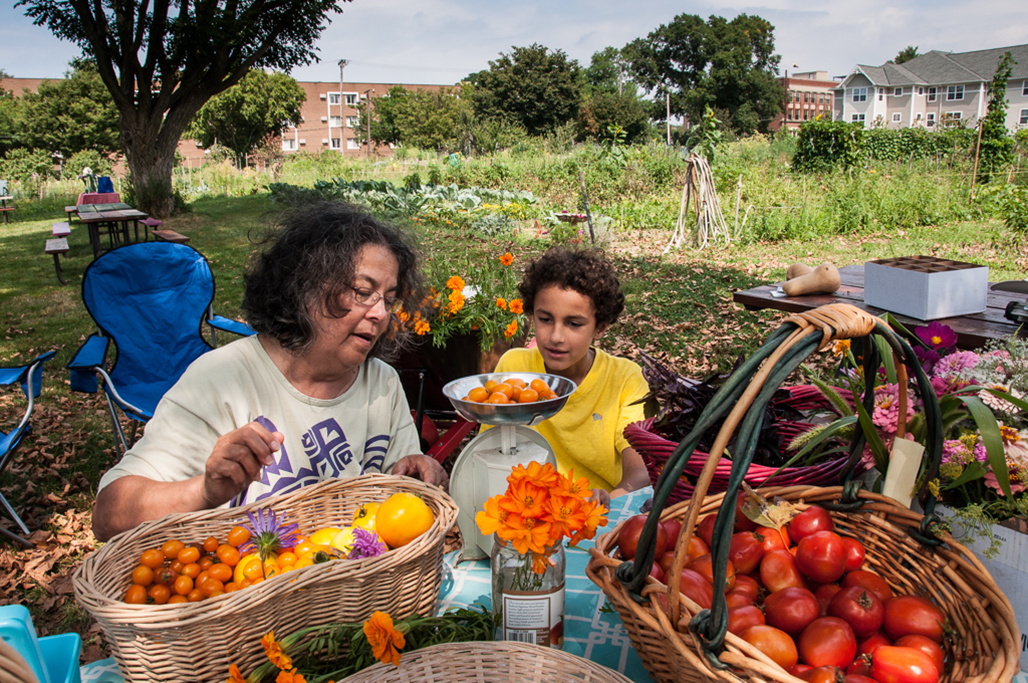
• Boulder, Colo. ($50,000): To build stronger and deeper representation of underserved communities in climate and energy decisions by facilitating dialogues with diverse stakeholders on community-defined priorities; piloting a renewable energy and energy efficiency workforce development program; supporting regional coordination on climate and equity, and generating metrics to guide data collection and evaluate progress. (Matching funder: Philanthropiece Foundation)
• Broward County, Fla. ($25,000): To support a sustainability education and youth leadership afterschool program in a distressed portion of the county that will teach high school students STEM skills, empowering them to become climate sustainability stewards and advocates to address their own neighborhood’s environmental challenges. (Matching funder: Community Foundation of Broward)
• Chicago, Ill. ($75,000): To better connect low- and moderate-income residents more easily to all of the “green” programs offered by the city, such as recycling, transportation, and energy efficiency, ensuring they can take advantage of the many tools and resources available to make their lifestyles more sustainable and help their household budgets go farther. (Matching funder: Chicago Community Trust)
• Columbia, Mo. ($100,000): To turn an under-used, 10-acre site in a low-income neighborhood into a multi-use agricultural park that will feature a farmers market, urban farm, outdoor classroom and green space. (Matching funder: Boone County Community Trust)
• Lincoln, Neb. ($75,000): To implement sustainability elements of a multi-year neighborhood planning process in a low-income neighborhood, such as improving walkability and pedestrian safety and providing green infrastructure, landscaping and urban reforestation, as well as increasing the size, number and potential of community gardens. (Matching funder: Lincoln Community Foundation)
• Newark, N.J. ($60,000): To develop and implement scalable strategies for promoting healthier, more energy-efficient homes in two target neighborhoods through a pilot program, targeting children under 6 years old exposed to lead. (Matching funders: Victoria Foundation; Greater Newark LISC; United Way of Essex and Hudson Counties; Essex Equities; PSEG Foundation)
• Syracuse, N.Y. ($25,000): To design and implement a comprehensive and inclusive outreach campaign that creates a unified vision for protecting and growing Syracuse’s urban forest. (Matching funder: The Gifford Foundation)
• Tacoma, Wash. ($45,000): To create an equitable and healthy food system that promotes healthy communities and people, supporting community members’ research and giving them the tools and resources to implement resilient food system ideas and projects. (Matching funder: The Russell Family Foundation)
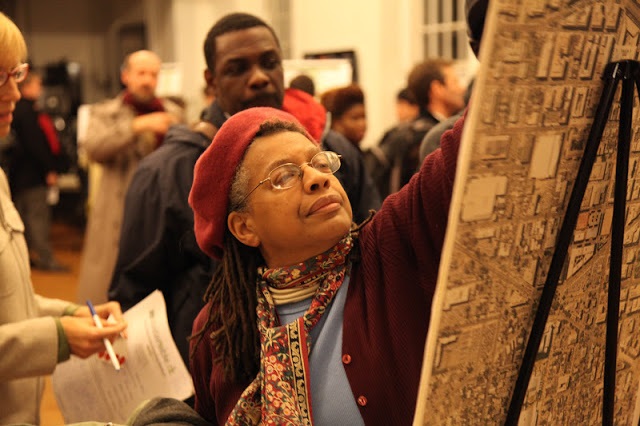
• Berkeley, Calif. ($30,000): To develop a “racial equity lens” tool that will include a set of questions that guide city policies and programs. The tool would be first used to incorporate racial equity into a community land-use planning process, and ultimately be applied to a broad range of programs and services. (Matching funders: The San Francisco Foundation; The East Bay Community Foundation)
• Charlotte, N.C. ($75,000): To create an accessible "smart city" platform where residents and government can kick-start collaboration on meaningful projects in categories that include healthy communities, neighborhood transportation, technology training programs, and smart homes and neighborhoods. (Matching funder: Knight Foundation; OrthoCarolina Foundation)
• Cleveland, Ohio ($60,000): To help improve outcomes in health, access to green jobs, and resiliency through equitable climate action planning and implementation, including workshops in 10 neighborhoods previously under-represented in sustainability efforts. (Matching funder: George Gund Foundation; Cleveland Foundation)
• Dubuque, Iowa ($50,000): To ensure city departments and partners learn strategies and have the tools needed to put climate-vulnerable communities at the center of decision-making and planning. The project will engage partners throughout the Washington Neighborhood to build non-profit capacity and social resiliency. (Matching funder: Community Foundation of Greater Dubuque)
• Minneapolis, Minn. ($75,000): To work with community members and organizations to implement a Green Zone pilot project that will address racial equity, improve health, and support economic development using environmentally conscious efforts in a community that faces the cumulative effects of environmental pollution and social, political and economic vulnerability. (Matching funder: McKnight Foundation)
• Providence, R.I. ($55,000): To incorporate racial equity as a core pillar of the city’s sustainability efforts, including additional training and tools that will support long-term goals specific to environmental and racial justice. (Matching funder: Rhode Island Foundation)
• Washington, D.C. ($60,000): To establish an equity advisory group of community residents from the Watts Branch neighborhood in order to bring equity and social cohesion into planning and implementation of the District’s climate adaptation and mitigation initiatives through a community-driven process. The project will produce a replicable model for authentic community engagement to be used in future planning efforts. (Matching funders: The Prince Charitable Trusts; Morris and Gwendolyn Cafritz Foundation)
Partners for Places will open a new round of funding for the general grant program during the first week of June, with proposals due in late July 2017. To attract additional interest in urban sustainability projects, the program also houses an Idea Bank on the Funders’ Network website, which provides summaries of past project applications.
For more information on Partners for Places, visit the Funders’ Network website at https://www.www.fundersnetwork.org/partnersforplaces/
Top photo: Lincon, Neb., received funding through Partners for Places to help sustainability efforts, such as improving walkability and pedestrian safety. [Photo Credit: Lincoln Community Foundation.]
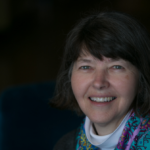 About the author: Ann Fowler Wallace is director of programs for the Funders' Network.
About the author: Ann Fowler Wallace is director of programs for the Funders' Network.
Looking for Progress: Exploring the Connection Between Economic Growth and Opportunity
"This piece raises important issues around how to ensure that urban revitalization efforts are equitable and sustainable in smaller legacy cities and beyond. As more communities recover from the Great Recession, these questions will become increasingly important in ensuring long-term growth and prosperity," writes Torey Hollingsworth in a recent blog post for the Greater Ohio Policy Center.
 About the author:
About the author:
Torey Hollingsworth is manager of research and policy for the Greater Ohio Policy Center, a non-profit, non-partisan organization based in Columbus and operating statewide, which develops and advances policies and practices that value urban cores and metropolitan regions as economic drivers and preserve Ohio’s open space and farmland. Through education, research and outreach, GOPC strives to create a political and policy climate receptive to new economic and governmental structures that advance sustainable development and economic growth.
On Self-Care and Resiliency in Racial Equity Work
Bina M. Patel of Saathi Impact Consulting and former PLACES fellow shares some brief tips on doing racial equity work from her module at the PLACES alumni gathering at The Funders’ Network 2017 Conference in Saint Paul, Minneapolis.
The point of self-care is to create the conditions for you to continue taking action towards progress everyday – to keep coming back. Self care is about creating resiliency in service of a greater good.
-Bina M. Patel
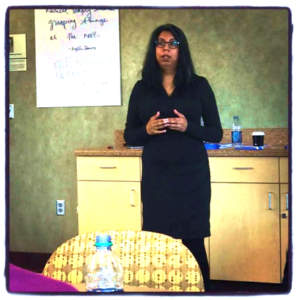 1. Be mindful of the space: Do you sit at a table with leadership at the front? Could you disrupt the power setup with a circular table or a different space that can disrupt the centered whiteness paradigm? This is a simple way to breakdown the power dynamic that most of us experience when we walk into a room or meeting. Another simple way is to ask ourselves, “How do we respond to emails or to those speaking up in meetings? Could we respond in a way that does not perpetuate systems of power? Also, am I perpetuating systems of power myself with how I interact and work with those around me?” While practicing compassion and self-care is imperative, it is also crucial not to normalize or enable inequity and racism—and this includes not only questioning those in power, but ourselves.
1. Be mindful of the space: Do you sit at a table with leadership at the front? Could you disrupt the power setup with a circular table or a different space that can disrupt the centered whiteness paradigm? This is a simple way to breakdown the power dynamic that most of us experience when we walk into a room or meeting. Another simple way is to ask ourselves, “How do we respond to emails or to those speaking up in meetings? Could we respond in a way that does not perpetuate systems of power? Also, am I perpetuating systems of power myself with how I interact and work with those around me?” While practicing compassion and self-care is imperative, it is also crucial not to normalize or enable inequity and racism—and this includes not only questioning those in power, but ourselves.
2. Bring compassion: One of the best tools to bring to the “table” is compassion. You are not being asked to get into the head of an aggressor, , but you can intentionally bear witness to their story—from a safe distance. Humanizing those around us builds bridges of honest dialogue. It is not necessary to self-traumatize for the sake of empathy. It is in the practice of not “othering” the aggressor that we allow ourselves to not to engage in their narrative, but also disrupt the power dynamic.
3. Generosity: Generosity is the spark for empathy. Find moments where you can be more generous—with yourself and with others. Invest in starting conversations versus making statements. Remember to give how you can in that moment—not how you are expected to or even sometimes how you would want to but cannot. It is also ok to be generous with yourself and take a moment to process information or a situation. In trying times, it is important that we find ways to replenish our empathy cup. It is what allows us to humanize others.
4. Self-care: Self-care is creating conditions for you to take repeated action. Resliency is the ability to keep going back to do the work. Resiliency is gained by purposeful self-care. This includes broader practices like having a supportive community and an equity toolkit at your disposal to individual practices like sleeping well, practicing mindfulness and meditation, and saying no when you need to. Self-care is different for every individual, but it is necessary for all. This also means acknowledging trauma responses such as fear, guilt, complaining, disassociating, and vices for what they are.
5. Choice Points: We make lots of choices, some that continue our complicity in the system. Looking our own choices allows us to be intentional about making different decisions that move us closer to equity – in big and small ways. A critical part of making choices towards equity is RISK. First, assess the situation. Then, try to manage the risk with equity tools and relationships, then, try to mitigate by finding new alternatives. Also, ask, why are we making certain decisions? What are the results we want? What is the mission? Do we have metrics and reasons behind our decision making and practices? Is is aligned to our equity principles?
In closing, wise words from Audre Lorde: “Caring for myself is not self-indulgence, it is self-preservation, and that is an act of political warfare.”
We look forward to sharing more tips and insight on doing racial equity work in 2017 through upcoming learning calls, blog posts, and social media. We invite you to join us on this shared learning experience. Stay tuned!

